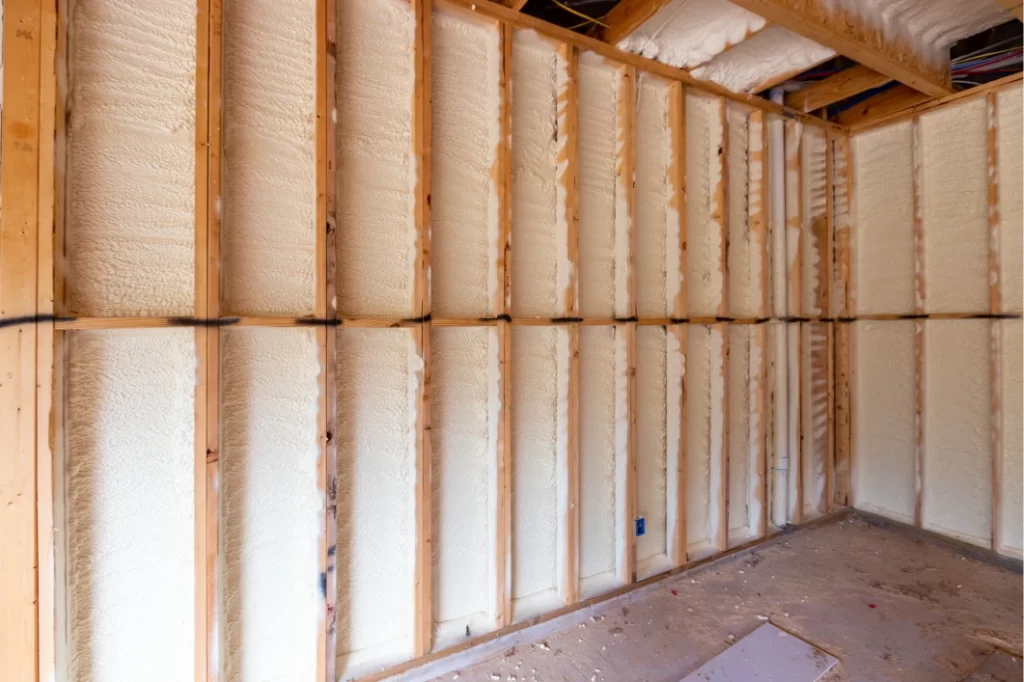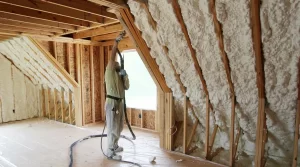Open-cell foam insulation provides a high-performance solution for interior wall insulation in Heyburn, ID. Its low density and ability to expand deeply into wall cavities allow it to create an airtight seal that improves thermal performance, reduces energy waste, and dampens indoor noise. Unlike traditional insulation, open-cell foam fills gaps and prevents air movement, helping to stabilize indoor temperatures year-round—particularly important in Heyburn’s climate with wide seasonal temperature shifts.
This article outlines the primary advantages of using open-cell foam in interior wall systems, compares it with alternative materials, provides technical specifications, and explores essential factors to consider before making a decision. You’ll also find bonus tips, FAQs, and a final checklist to help guide insulation planning based on your home or building needs.
Why Open-Cell Foam Works Well in Heyburn Interior Walls
Airtight Performance and Comfort Gains
One of the most critical advantages of open-cell foam is its ability to air-seal wall cavities. This stops uncontrolled air infiltration—one of the leading causes of heating and cooling loss in residential structures.
- Reduces indoor drafts and temperature swings
- Minimizes HVAC energy load
- Improves seasonal energy efficiency
Open-cell foam expands up to 100 times its original volume. This allows it to conform around plumbing, wiring, and studs—areas where other insulation materials often leave gaps.
Acoustic Control in Living Spaces
In addition to thermal performance, open-cell foam has excellent sound absorption capabilities. The interconnected air pockets in its structure trap sound waves and reduce transmission between rooms.
Ideal use cases in Heyburn homes include:
- Interior bedroom walls for added privacy
- Home offices or media rooms
- Duplex or multi-family dwellings with shared walls
Bonus Tip: Pair open-cell foam with acoustic drywall or resilient channels for enhanced soundproofing between floors.
Comparative Overview of Insulation Types
The following table compares open-cell foam with other commonly used interior wall insulation materials. The goal is to clarify which type best fits specific performance needs.
| Feature | Open-Cell Foam | Closed-Cell Foam | Fiberglass Batts | Cellulose |
| R-Value per Inch | ~3.5–3.8 | ~6.0–7.0 | ~2.9–3.8 | ~3.2–3.8 |
| Air Sealing | Excellent | Excellent | Poor | Moderate |
| Sound Dampening | High | Moderate | Low | Moderate |
| Water Permeability | Permeable (breathes) | Impermeable | Permeable | Permeable |
| Expansion Capability | Flexible, expansive | Dense and rigid | None | None |
| Application Method | Spray-in-place | Spray-in-place | Rolled or cut batts | Blown-in |
| Typical Cost | Moderate | Higher | Low | Moderate |
| Best Use Case | Interior walls | Exteriors, basements | Attics, accessible walls | Retrofits |
Technical Specs and Data Summary
This table outlines the key technical attributes of open-cell foam insulation as typically used in interior wall applications.
| Attribute | Specification |
| Material Density | ~0.5 lb/ft³ |
| R-Value (3.5″ thickness) | R-13 to R-15 |
| Vapor Permeability | ~10 perms (high breathability) |
| Expansion Rate | Up to 100x original liquid volume |
| Thermal Conductivity | ~0.036 W/m·K |
| Flame Retardancy | Meets ASTM E84 Class 1 requirements |
| Installation Requirements | Minimum 40°F surface temperature |
| Cure Time | Immediate set, full cure within minutes |
| Shelf Life (pre-install) | 6–12 months (in original containers) |
Local Climate and Market Considerations
Heyburn, ID, located in Minidoka County, experiences four-season weather extremes. Winters can reach lows near 10°F, while summers often rise above 90°F. These swings place significant demand on HVAC systems. According to recent studies by the Idaho Office of Energy and Mineral Resources, buildings in this region lose over 30% of conditioned air through poorly insulated walls and air gaps.
Installing open-cell foam in interior partitions helps retain conditioned air while reducing utility costs. In combination with sealed exterior walls, this insulation method creates a thermal envelope that increases occupant comfort and minimizes energy waste.
Things to Consider Before Making a Decision
When selecting insulation for your interior walls, the following criteria should guide your evaluation of open-cell foam:
Structural and Environmental Fit
- Wall cavity depth: A 2×4 wall is ideal, as 3.5″ of open-cell foam fills it completely, achieving R-13+ insulation.
- Drywall readiness: Foam should be trimmed flush with the studs before finishing.
- Indoor air quality: Once cured, the material is chemically stable and safe for indoor environments.
Moisture and Humidity Risks
- Open-cell foam is vapor permeable, meaning it allows moisture vapor to pass through. This can be beneficial for avoiding trapped condensation but problematic in areas prone to water intrusion.
- Not recommended for below-grade applications or exterior-facing basement walls unless paired with a proper vapor barrier.
Bonus Tip: Always test wall cavities for hidden moisture before installing open-cell foam to prevent mold issues.
Budget and ROI
While more costly upfront than fiberglass, open-cell foam delivers savings over time via:
- Lower energy bills
- Fewer HVAC maintenance cycles
- Longer-term building performance
It is considered a mid-cost insulation solution with high long-term value.
Common Questions About Open-Cell Foam
Can open-cell foam be used on all walls?
Not all. It’s best for interior walls and conditioned spaces. For walls exposed to moisture, closed-cell foam is preferred.
Will it trap moisture inside walls?
No. Its vapor-permeable structure allows moisture to escape if the building is properly ventilated.
Does it shrink or settle over time?
No. It remains in place once installed and cured, maintaining its form indefinitely.
Is special maintenance required?
No ongoing maintenance is needed after installation.
Bonus Tips for Installation and Use
- Ensure cavity access: For retrofits, walls may need to be opened. Plan this with your contractor beforehand.
- Work with experienced professionals: Improper mixing or spraying can lead to weak foam or off-ratio chemicals.
- Plan around electrical and plumbing: Install foam after these systems are finalized to avoid costly changes.
FAQ
How long does open-cell foam insulation last?
It can last 50 years or more without degradation if installed correctly and protected from moisture.
Does open-cell foam add structural strength?
No. Unlike closed-cell foam, it does not significantly add rigidity to walls.
Can it be used with other insulation types?
Yes. It can complement other materials like fiberglass or cellulose in hybrid assemblies.
What are the fire safety ratings?
It meets Class 1 fire resistance standards under ASTM E84.
Can I use it in sound studios or quiet rooms?
Yes. Its acoustic dampening properties make it suitable for spaces requiring noise control.
Summary of Key Takeaways
Open-cell foam provides an efficient, reliable solution for interior wall insulation service in Heyburn, ID. It excels at reducing air infiltration, stabilizing indoor temperatures, and cutting sound transmission. With a high expansion rate and vapor permeability, it is well-suited for conditioned living spaces but should be carefully evaluated for areas with potential moisture exposure.
Evaluate wall depth, indoor humidity, and budget before choosing open-cell foam. When properly installed, it delivers decades of performance, comfort, and energy savings.
Ready to Achieve Better Energy Performance?
Apply these insights now: Schedule your wall insulation assessment with Valley Spray Works.
Contact Details
Valley Spray Works
📞 (208) 490-9260
📧 [email protected]
Reviewer:
Emily Martinez has 12 years of experience in spray foam insulation. She reviewed this article and suggested ways to make the content more useful for contractors looking to grow their customer base.








